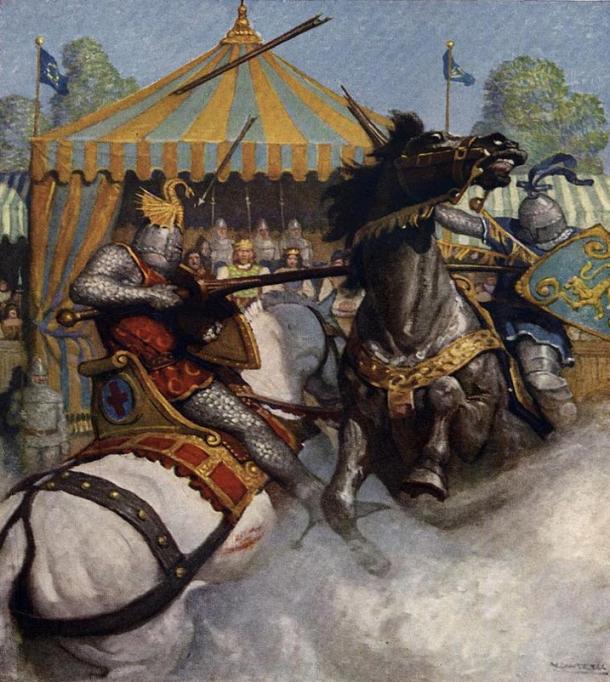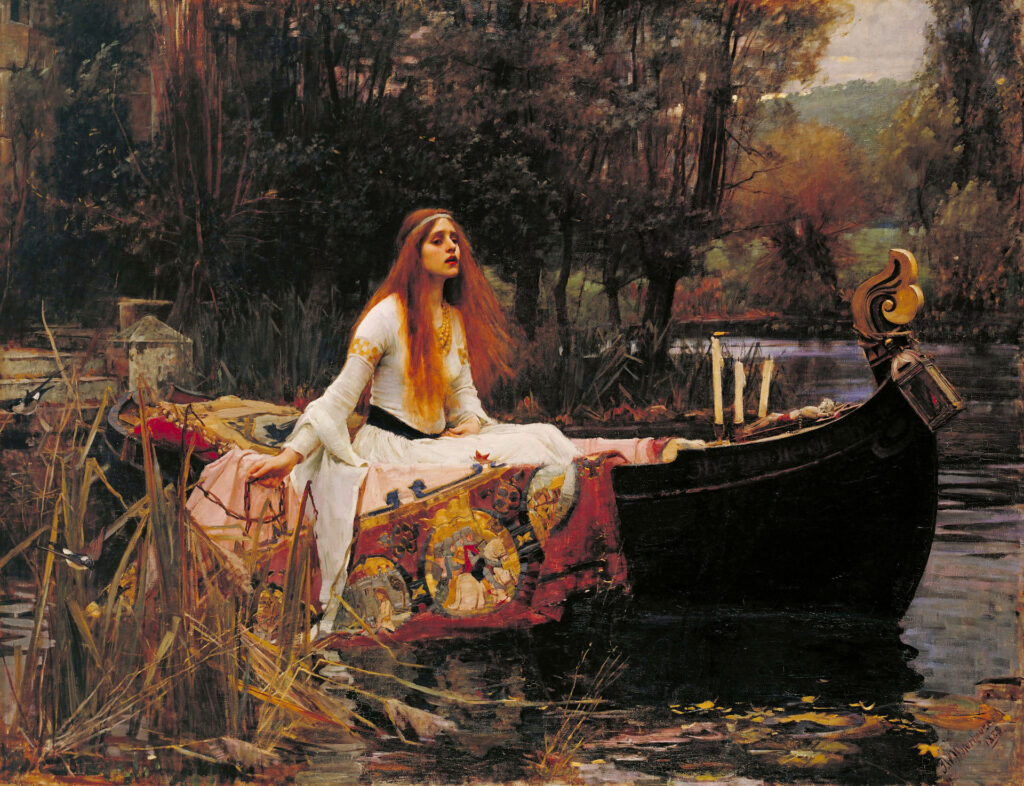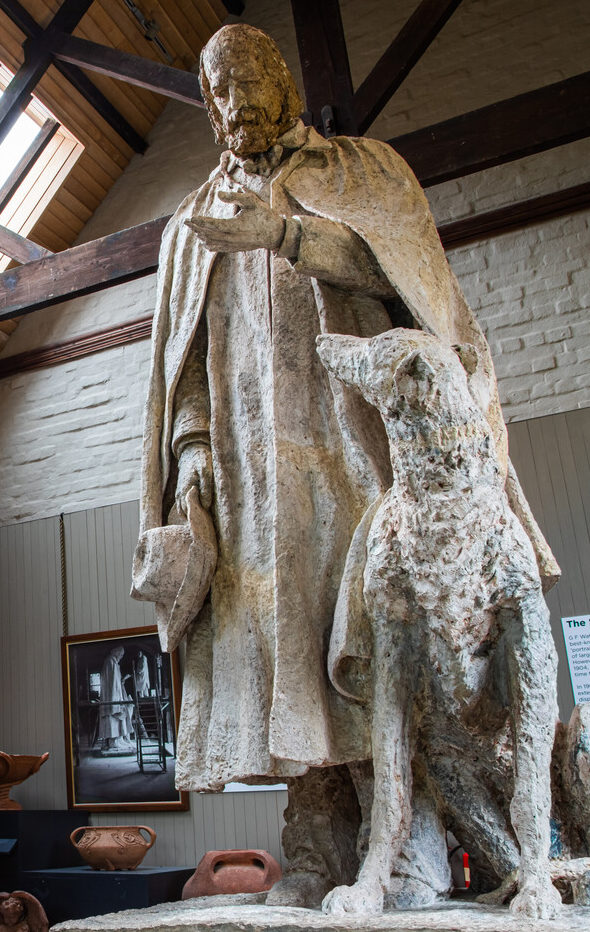 Abraham Lincoln
If given the truth, the people can be depended upon to meet any national crisis...
Abraham Lincoln
If given the truth, the people can be depended upon to meet any national crisis...
 Guildford news...
for Guildford people, brought to you by Guildford reporters - Guildford's own news service
Guildford news...
for Guildford people, brought to you by Guildford reporters - Guildford's own news service
Through Time: Guildford Castle and King Arthur
Published on: 29 Mar, 2024
Updated on: 2 Apr, 2024
Guildford Castle opens its doors today, Saturday (March 30), for the summer. If you have not been up the tower for a while it is worth the experience, offering great views of the town and surrounding countryside. It is open Wednesdays to Saturdays (12pm to 4-30pm). See the website for details.
To commemorate the opening, Gavin Morgan has written an aspect of the castle that deserves to be better known.
By Gavin Morgan
founder of the Guildford History Forum
Perhaps you have heard of the Astolat Pub, the Astolat Model Railway Society, the Astolat Pavilion for Guildford bowls (also the home of Guildford Shakespeare) or the Astolat Tea Rooms featured in old Guildford photographs. But did you know that Astolat links Guildford with the legends of King Arthur?
Astolat was a castle described by Thomas Malory in his retelling of the stories of Camelot, Le Morte d’Arthur (published by William Caxton in 1485). In the Arthurian tales Astolat is the home of Lady Elaine, the Fair maid of Astolat, who nurses Sir Lancelot back to health after being injured in a joust, but who dies of unrequited love when he leaves.
Not exactly a cheerful tale, but is certainly a dramatic story with plenty of depth. It starts at Camelot where King Arthur is becoming suspicious of the relationship between Lancelot and Guinevere. Guinevere sends Lancelot away.
“And so upon the morn, early Sir Launcelot [sic] heard mass and brake his fast, and so took his leave of the queen and departed. And then he rode so much until he came to Astolat, that is Guildford…”
At Astolat, Sir Lancelot is greeted by Sir Bernard who lives with Elaine le Blank, his “daughter that was called that time the Fair Maiden of Astolat”. She instantly falls in love with Sir Lancelot and when he leaves to take part in a tournament at Camelot she pleads with him to wear “a red sleeve of mine, of scarlet, well embroidered with great pearls”.
At first, he hesitates having never worn a token out of loyalty to Queen Guinevere but as he intends to return in disguise he agrees and places it on his helmet. The tourney is not the jousting we tend to think of. Early tourneys were mock battles involving hundreds of nights and injuries were not uncommon.

Jousting tournament with King Arthur’s men. Taken from: The Boy’s King Arthur: “Sir Mador’s spear brake all to pieces, but the other’s spear held.” By N.C.Wyeth. 1922. Image: Wikimedia
Lancelot, although he defeats many knights gets badly injured and is taken back to Astolat by Elaine’s brother. There Elaine nurses him night after night back to health. Eventually, Lancelot, well again, decides to depart.
Elaine expresses her desire to marry him. To quote the original story, “I would have you to my husband, said Elaine. Fair damosel, I thank you, said Sir Launcelot, but truly, said he, I cast me never to be wedded man.”
On Lancelot’s departure, Elaine refuses to eat or sleep and dies of unrequited love but just before she dies she leaves instructions to be placed in a boat and is floated past King Arthur’s palace with a letter in her hand. There Arthur, Guinevere and Lancelot are confronted by the consequences of the whole story. It’s a clever plot twist in which, as some commentators explain, Elaine demonstrates the power a wounded woman can wield.
It is not known how the ruins of Guildford Castle came to the attention of the author of Le Morte d’Arthur. Although the work is accredited to Thomas Malory, it is not even certain that he was the author and most of the stories were translations from French or Italian works.
In the story Winchester is identified as Camelot and, in the end, Elaine’s body is placed in the River Thames and floats past Westminster Palace where Arthur and the royal party see it.
By the 1400s when this Arthurian tale was written, Guildford Castle was in the ruined state we see today. The stone tower was in use from the late 1100s and a palace was built here in the mid 1200s. In 1347, King Edward III stayed here for Christmas but, soon after, the castle was allowed to fall into ruin.
Walls were demolished and stones taken away to be used at other castles. By 1379, all that was left were the ruins that we see today, overgrown with trees and shrubs. However, the royal palace had been important in its day and perhaps it was still sufficiently well known to spring to the mind of the author. Being halfway between “the Westminster” and “Winchesseter” it was an important stopping point for monarchs.
Although Le Morte d’Arthur links Astolat with Guildford, the story is much older. The possible original version of the story appeared in the early 13th-century French prose romance Mort Artu, with Lady of Escalot. Another version is told in a 13th-century Italian short story in which she is the Lady of Scalot. It was this version that would inspire another great Arthurian storyteller.
The great Victorian poet Alfred Lord Tennyson retold the legend of Elaine in his epic poem The Lady of Shalott published in 1832. In this retelling the Lady is confined to a tower and subject to a mysterious curse which forces her to weave images in a loom and look at the world through a mirror.
She never meets Sir Lancelot but on seeing him passing one day she looks directly out of her window and brings on the curse. As she is dying, she finds a boat and floats down to Camelot. She dies on the way but is seen (as in the original) by Arthur, Guinevere and Lancelot. The poem has been interpreted in many ways. Some see it as a metaphor for the isolation of an artist whilst others see it as representing the position of women in Victorian society.
Lord Tennyson, later retold the Arthurian legends in a cycle of twelve poems called Idylls of the King, published between 1859 and 1885. The included a retelling of Mallory’s story of Elaine. Tennyson is credited with being a major influence on the Arthurian revival in the nineteenth century and particularly on the Pre-Raphaelite movement. The Lady of Shalott, itself, inspired several artists including John William Waterhouse.
At this point in the story, another local link emerges because George Frederick Watts was a great friend of Tennyson and painted his portrait six times. When Tennyson died in 1892 Watts offered to create a memorial statue which can still be seen in its original location outside Lincoln Cathedral (You can read more on the Watts Gallery website). The original model is on display at Watts Gallery in Compton (open daily).
But the story of Astolat does not stop there. In the early 2000s, a series of best-selling teen novels called Avalon High by Meg Cabot retold the Arthurian legends in a modern American high school setting, with links, back to medieval fantasy.
The star, teenager Ellie, was based on Lady Elaine. This is a happier tale in which Ellie discovers her friends are, in fact, re-incarnations of Arthur, his knights and her challenge is to ensure that good prevails.
It was turned into a film by the Disney Channel released in 2010. And a doll’s house, designed as an imaginary interpretation of castle Astolat, became in 2015, the most expensive dolls house ever sold at auction.
Valued at £6 million the 29-room “Astolat Dollhouse Castle” was constructed over a period of 13 years (between 1974 and 1987) by American artist Elaine Diehl. Modelled after the castle in Alfred Lord Tennyson’s The Lady of Shalott, the 9-ft-tall (2.7-m) doll’s house contains 10,000 miniature items.
Clearly, the story of Astolat, started here 600 years ago, continues to inspire.

Click on cartoon for Dragon story: Public Asked for Views on SCC’s Proposal for Reduced Speed Limits



Recent Articles
- Residents Hit By CIL Fees Should Be Offered Full Review, Says Overview Committee
- Plans For New Guildford Preschool Rejected On Road Safety Grounds
- Expert in AI Is New Head of the University of Surrey
- From East Clandon to Paris – Charity Cyclists Complete Epic 24-hour Challenge
- Updated: Local MPs Vote in Favour of Assisted Dying
- Guildford Plans Three-Day Celebration In a Festival of History And Culture
- Local Therapy Garden Supporting Mental Health Shortlisted for BBC Award
- Thousands of Year Six Pupils at Guildford Cathedral for a Special Send Off
- New Surrey Research to Find Solutions to Local Challenges
- Comment: What Are We To Make of the GBC Executive ‘Reshuffle’?


Search in Site
Media Gallery
Dragon Interview: Local Artist Leaves Her Mark At One of England’s Most Historic Buildings
January 21, 2023 / No Comment / Read MoreDragon Interview: Lib Dem Planning Chair: ‘Current Policy Doesn’t Work for Local People’
January 19, 2023 / No Comment / Read MoreA3 Tunnel in Guildford ‘Necessary’ for New Homes, Says Guildford’s MP
January 10, 2023 / No Comment / Read More‘Madness’ for London Road Scheme to Go Ahead Against ‘Huge Opposition’, Says SCC Leader
January 6, 2023 / No Comment / Read MoreCouncillor’s Son Starts Campaign for More Consultation on North Street Plan
December 30, 2022 / No Comment / Read MoreCounty Council Climbs Down Over London Road Works – Further ‘Engagement’ Period Announced
December 14, 2022 / No Comment / Read MoreDragon Interview: GBC Reaction to the Government’s Expected Decision to Relax Housing Targets
December 7, 2022 / No Comment / Read MoreHow Can Our Town Centre Businesses Recover? Watch the Shop Front Debate
May 18, 2020 / No Comment / Read More











Recent Comments